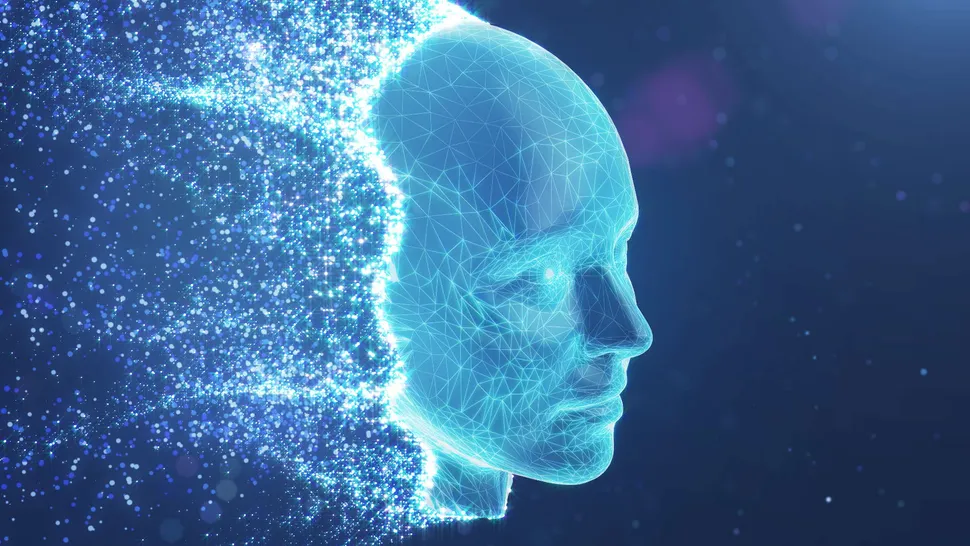AMD files teleportation patent to supercharge quantum computing

AMD has proposed a patent for 'teleportation,' meaning things could be about to
get much more efficient around here. With the incredible technological feats
humanity achieves on a daily basis, and Nvidia's Jensen going off on one last
year about GeForce holodecks and time machines, it's easy for us to slip into a
headspace that lets us believe genuine human teleportation is just around the
corner. "Finally," you sigh, mouthing the headline to yourself. "Goodbye work
commute, hello popping to Japan for an authentic Ramen on my lunch break." ...
Essentially, the 'out-of-order' execution method AMD is looking to lay claim to
ensures some Qubits that would be left idle—waiting for their calculation step
to come around—are able to execute independent of a prior result. Where usually
they would need to wait for previous Qubits to provide instructions, they can
calculate simultaneously, no need to wait in line. So, no, we're not going to be
zipping through wormholes just yet. But if AMD's designs come through, we could
be looking at much more efficient, scalable and stable quantum computing
architecture than we have now.
The Internet of Things Requires a Connected Data Infrastructure

Not long ago, a terabyte of information was an enormous amount and might be the
foundation for solid decision-making. These days, it won’t cut it. For example,
looking at a terabyte of data might yield a decision that’s 70% accurate. But
leaving 30% to chance is unacceptable when it comes to real-time vehicle safety.
On the other hand, having the ability to ingest and process 40 terabytes — from
all sources, edge to core — can result in an accuracy rate well exceeding 90%
accuracy. Something jumps in front of your car — is it a person, a dog, a trash
bag, a child’s ball? Real-time systems need to determine the level of risk and
react in micro milliseconds. Real-time processing has to be done closer to where
the decisions are being made. In terms of IoT, a lot of questions can be
answered by using a digital twin. These create additional layers of insights and
provide a better understanding of what’s happening in any given situation and
decide on the most appropriate course of immediate action. Digital twins take
insight not just from the raw sensors — the edge compute nodes — but a
combination of real-time data at the edge and historical data at the core.
Can Your Organization Benefit from Edge Data Centers?

Organizations considering a move to edge computing should begin their journey by
inventorying their applications and infrastructure. It's also a good idea to
assess current and future user requirements, focusing on where data is created
and what actions need to be performed on that data. "Generally speaking, the
more susceptible data is to latency, bandwidth, or security issues, the more
likely the business is to benefit from edge capabilities," said Vipin Jain, CTO
of edge computing startup Pensando. “Focus on a small number of pilot projects
and partner with integrators/ISVs with experience in similar deployments."
Fugate recommended examining business functions and processes and linking them
to the application and infrastructure services they depend on. "This will ensure
that there isn’t one key centralized service that could stop critical business
functions," he said. "The idea is to determine what functions must survive
regardless of an infrastructure or connectivity failure." Fugate also advised
determining how to effectively manage and secure distributed edge platforms.
How to Speed Up Your Digital Transformation
The complexity-in-use is often overlooked in digitalization projects because
those in charge think that accounting for task and system complexity
independent of one another is enough. In our case, at the beginning of the
transformation, tasks and processes were considered relatively stable and
independent from the new system. As a result, the loan-editing clerks were
unable to complete business-critical tasks for weeks, and management needed
to completely reinvent their change management approach to turn the project
around and overcome operational problems in the high complexity-in-use area.
They brought in more people to reduce the backlog, developed new training
materials, and even changed the newly implemented system — a problem-solving
technique organizations with smaller budgets wouldn’t find easy to deploy.
In the end, our study partner managed this herculean task, but it took them
months to get the struggling departments back on track.
Ecosystems at The Edge: Where the Data Center Becomes a Marketplace
Rapidly evolving edge computing architectures are often seen as a way for
businesses to enable new applications that require low latency and place
computing close to the origin of data. While those are important use cases,
what is less often discussed is the opportunity for businesses to leverage
the edge to spawn ecosystems that generate new revenue. To realize this
value, companies must think of the edge as more than just a collection point
for data from intelligent devices. They should broaden their vision to see
the edge as a new business hub. These small data centers can evolve into
full-fledged service providers that attract local businesses, generate
e-commerce transactions and enable interconnections that never touch the
central cloud. Edge computing is an expansion of cloud infrastructure that
moves data collection, processing and services closer to the point at which
data is created or used. It is the fastest-growing segment of the cloud
category with the total market expected to expand 37% annually through 2027,
according to Grand View Research.
NSA: We 'don't know when or even if' a quantum computer will ever be able to break today's public-key encryption
In the NSA's summary, a CRQC – should one ever exist – "would be capable of
undermining the widely deployed public key algorithms used for asymmetric
key exchanges and digital signatures" – and what a relief it is that no one
has one of these machines yet. The post-quantum encryption industry has long
sought to portray itself as an immediate threat to today's encryption, as El
Reg detailed in 2019. "The current widely used cryptography and hashing
algorithms are based on certain mathematical calculations taking an
impractical amount of time to solve," explained Martin Lee, a technical lead
at Cisco's Talos infosec arm. "With the advent of quantum computers, we risk
that these calculations will become easy to perform, and that our
cryptographic software will no longer protect systems." Given that nations
and labs are working toward building crypto-busting quantum computers, the
NSA said it was working on "quantum-resistant public key" algorithms for
private suppliers to the US government to use, having had its Post-Quantum
Standardization Effort running since 2016.

There are multiple ways that AI could become a detriment to society. Machine
learning, a subfield of AI, learns from vast quantities of data and hence
carries the risk of perpetuating data bias. AI use cases including facial
recognition and predictive analytics could adversely impact protected classes
in areas such as loan rejection, criminal justice and racial bias, leading to
unfair outcomes for certain people. ... AI is only as good as the data that is
used to train it. From an industry perspective, this is problematic given
there is often a lack of training data for true failures in critical systems.
This becomes dangerous when a wrong prediction leads to potentially
life-threatening events such as manufacturing accidents or oil spills. This is
why a focus on hybrid AI and “explainable AI” is necessary. ... Unfortunately,
cybercriminals have historically been better and faster adopters of technology
than the rest of us. AI can become a detriment to society when deepfakes and
deep learning models are used as vehicles for social engineering by scammers
to steal money, sensitive data and confidential intellectual property by
pretending to be people and entities we trust.
Reviewing the Eight Fallacies of Distributed Computing
The challenges of distributed systems, and the broad science around the
techniques and mechanisms used to build them, are now well researched. The
thing you learn when addressing these challenges in the real world, however,
is that academic understanding only gets you so far. Building distributed
systems involves engineering pragmatism and trade-offs, and the best solutions
are the ones you discover by experience and experiment. ... However, the
engineering reality is that multiple kinds of failures can, and will, occur at
the same time. The ideal solution now depends on the statistical distribution
of failures; or on analysis of error budgets, and the specific service impact
of certain errors. The recovery mechanisms can themselves fail due to system
unreliability, and the probability of those failures might impact the
solution. And of course, you have the dangers of complexity: solutions that
are theoretically sound, but complex, might be far more complicated to manage
or understand whenever an incident takes place than simpler mechanisms that
are theoretically not as complete.
Machine Learning Algorithm Sidesteps the Scientific Method

We might be most familiar with machine learning algorithms as they are used in
recommendation engines, and facial recognition and natural language processing
applications. In the field of physics, however, machine learning algorithms
are typically used to model complex processes like plasma disruptions in
magnetic fusion devices, or modeling the dynamic motions of fluids. In the
case of this work by the Princeton team, the algorithm skips the interim steps
of needing to be explicitly programmed with the conventions of physics. “The
algorithms developed are robust against variations of the governing laws of
physics because the method does not require any knowledge of the laws of
physics other than the fundamental assumption that the governing laws are
field theories,” said the team. “When the effects of special relativity or
general relativity are important, the algorithms are expected to be valid as
well.” The researchers’ approach was inspired in part by Oxford philosopher
Nick Bostrom’s philosophical thought experiment that the universe is actually
a computer simulation.
What's the Real Difference Between Leadership and Management?
Leaders, like entrepreneurs, are constantly looking for ways to add to their
world of expertise. They tend to enjoy reading, researching and connecting
with like-minded individuals; they constantly aim to grow. They are usually
open-minded and seek opportunities that challenge them to expand their level
of thinking, which in turn leads to developing more solutions to problems that
may arise. Managers, many times, rely on existing knowledge and skills by
repeating proven strategies or behaviors that may have worked in the past to
help maintain a steady track record within their field of success with
clients. ... Leaders create trust and bonds between their mentees that go
beyond expression or definition. Their mentees become raving fanatics willing
to go above and beyond the usual scope of supporting their leader in achieving
his or her mission. In the long run, the overwhelming support from his or her
fanatics helps increase the value and credibility of the leader. On the other
hand, managers direct, delegate, enforce and advise either an individual or
group that typically represents a brand or organization looking for direction.
Followers do as they are told and rarely ask questions.
Quote for the day:
"Most people don't know how AWESOME
they are, until you tell them. Be sure to tell them." --
Kelvin Ringold
No comments:
Post a Comment